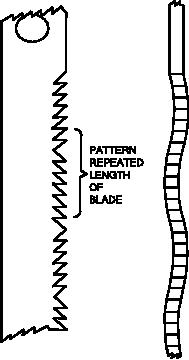
TM 1-1500-204-23-11
number of vacuum ports connected to the pump
should be determined by peak usage.
i. Portable Vacuum Cleaner. Vacuum cleaners
can be used to assist in collecting dust from sanding
and grinding operations as well as for general shop
cleanup in a repair facility. If no dust collection
system is attached to a tool, the nozzle of a portable
vacuum cleaner can be held near the waste source
to eliminate or greatly reduce the amount of dust
produced during the operation. Vacuum ilters should
be changed frequently to prevent clogging. Some
ilters are a high eficiency particulate air (HEPA) ilter
that is 99.97% eficient at the 0.3 micron level.
3-3. HANDHELD TOOLS. The following paragraphs
give the requirements for handheld tools required to
sand, grind, cut, machine, drill, countersink, and ream
advanced composite materials. Some of these tools
and equipment are unique to composites and the
procedures used are sometimes unique in order to
produce high-quality repairs. The use of improper
tools, equipment, and/or procedures will damage repair
areas. It is common practice in a structural mainte-
Figure 3-1. Alternating Tooth Bandsaw Blade for
nance shop to sand and/or oil the bare metal surfaces
Cutting Aramid Laminates
on tools to remove/prevent rust; however, the oil can
easily be transferred to the technician s hands and
then to the surfaces being repaired and the materials
f. Layup Tables. Tables used for composite mate-
used for the repair. To prevent oil contamination, a
rial cutting and layup should be sturdy enough to sup-
dedicated composite tool kit with unoiled tools should
port the materials being cut as well as any associated
be kept in the composite repair facility. If air tools
tooling. The table tops should consist of a material
are used, they should have a rear exhaust capture
that does not produce foreign particulates when cutting
device to prevent air line oil from contaminating the
and can be readily cleaned. Two types of table tops
part.
that have been found to provide satisfactory perfor-
mance are glass tops and self-healing urethane tops
a. Router. A router is a portable, high speed
(sometimes called Mochathane). Glass tops made
from tempered glass 1/2 inch thick (or two layers of
cutting tool equipped with a base and a guide. It may
1/4 inch) provide a good cutting and layup surface.
be used for machining both skin and core material.
Due to the risk of fracture, care must be exercised to
Normally, the router is used with a template that
not drop objects on the glass top. Urethane tops are
ensures a smooth and regular cut. A router is often
typically 1/4 inch thick and are not easily damaged
used for irregular holes or on round holes where
by dropped tools.
access to the back side is limited and the material
cannot be backed up to prevent splintering. A router
is preferred for core removal operations. Routing is
g. Compressed Air Supply. Shop air should be
done using a vacuum to draw off loose material.
maintained at or near 100 psi and have suficient low
capacity to operate all air tools that are expected to
(1) Template. When a router is used for dam-
be operated simultaneously. Shop air should be clean
and oil free to prevent contamination of the composite
age removal, a template should be fabricated to guide
surface.
and control the tool accurately and ensure uniform
and neat cuts. The template should be conigured to
take into account the setback of the router guide and
h. Vacuum Pump. A vacuum pump rated at a
the required depth of penetration. If the part surface
minimum of 3 ft/min low rate and an ultimate vacuum
is curved, the template must be fabricated from a
of 15 torr (0.3 psi absolute) or less is needed to
lexible material. Templates may also be necessary
provide adequate vacuum levels for repair operations.
to control the depth of the damage removal. If only
Permanent or portable vacuum pumps are available
the skin is to be removed, the template must follow
and should be sized and selected in accordance with
the contour of the skin. The router should be set to
facility requirements. For permanent installations, the
cut through the skin only, leaving the adhesive on

